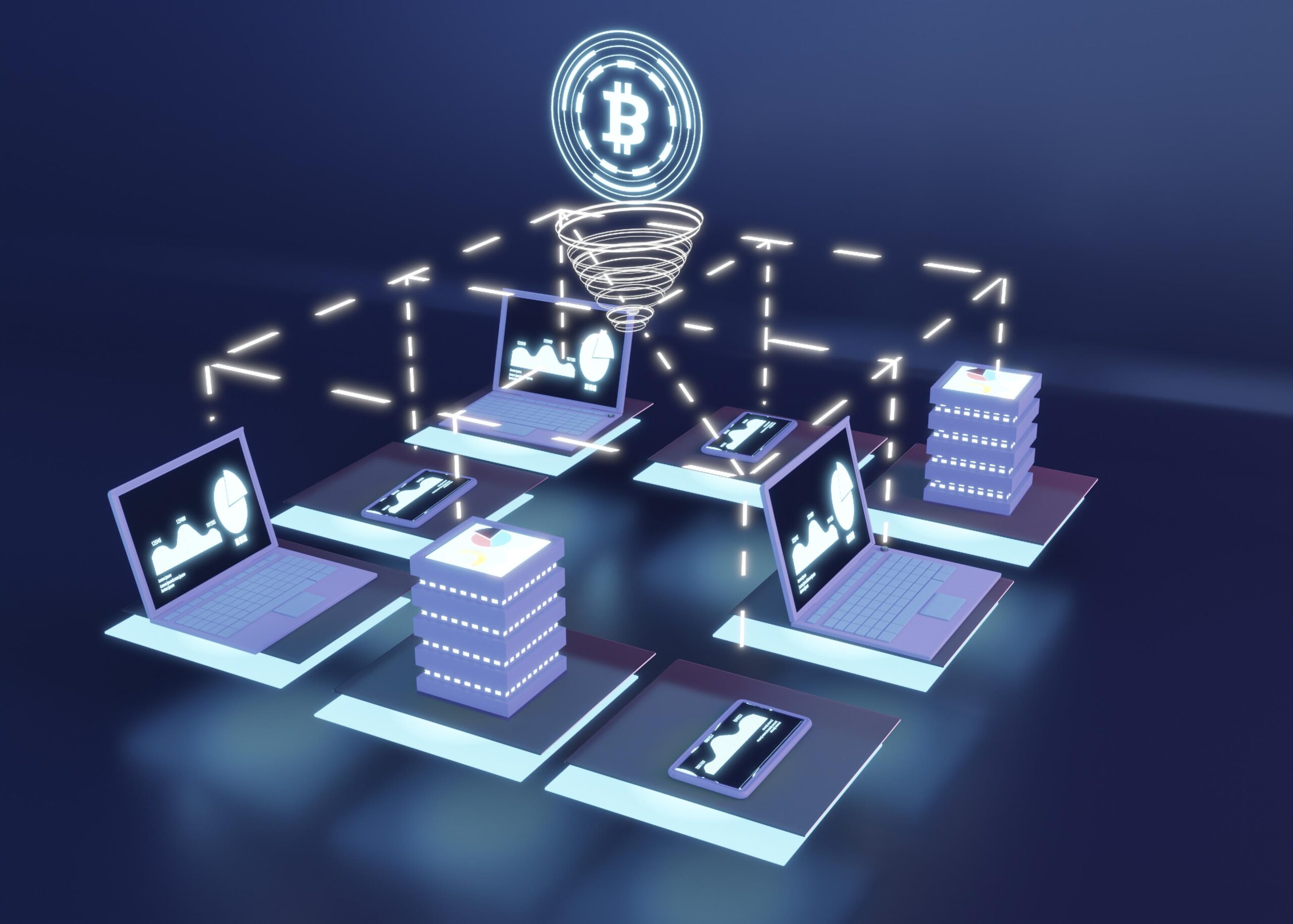Most casual observers of blockchain immediately reach for terms like cryptocurrency, alt-coin, or yield farm. The reality, however, is that the underlying distributed ledger has begun to crawl, then run, into sectors that never weigh currency at all.
Factories now track every bolt and bearing across a permanent chain of custody. Clinics use the same ledger to let patients control their own records while regulators peek in only when the rules demand it.
Even the ballots cast on Election Day are finding their way onto tamper-proof blocks, and citizen ID cards are beginning to vanish, replaced by hash codes and digital signatures. All of these breakthroughs share one DNA strand: trust enforced by code rather than by promises on paper.
The present discussion is not about trading pairs at all; it is about the quiet revolution brewing in warehouse aisles, operating rooms, and municipal auditoriums. Curious veterans, tech skeptics, and accidental code-readers alike should discover that the next big thing may have already arrived without an IPO.
A clear ecosystem is emerging, and with every passing quarter its contours sharpen.
The decentralization woven into the architecture produces an audit trail no single party can erase, creating a new baseline for accountability.
Early adopters speak of efficiency gains measured in minutes and of risks that once lived in contract clauses now drifting into the past tense.
Examples such as these demand attention long after the last Bitcoin halving.
1. Healthcare: Improving Data Security and Patient Privacy

Digital patient files are multiplying across hospitals and clinics, yet each new record heightens the stakes for privacy and security. One non-financial application of blockchain technology that attracts growing interest is the development of a tamper-resistant ledger for medical data.
In this framework, every entry is cryptographically sealed, making retroactive alteration nearly impossible. When a clinician needs to share information, select portions of the chain can be unsealed for viewing while the bulk of the file remains encrypted.
That degree of granularity reduces the risk of wholesale data breaches and speeds routine authorizations. Drug manufacturers, wholesalers, and retail pharmacies can each append time-stamped proofs of authenticity, so counterfeit pharmaceuticals have fewer hiding places.
2. Supply Chain Management: Enhancing Transparency and Efficiency

Modern supply chains slice across oceans and continents, often involving dozens of intermediaries before a product reaches store shelves. A shared blockchain, visible to every participant but writable by only designated actors, creates a single point of truth that does not require endless reconciliation.
Scanners at loading docks can record shipment weights and seals directly to the chain, eliminating paperwork bottlenecks that slow transfers between rail, ship, and truck. That up-to-the-minute visibility enables retailers to fine-tune inventory restocks and lets regulators trace food recalls to specific fields within hours rather than weeks.
An immutable ledger embedded in a blockchain allows every shipment to leave its mark; growers, processors, and deliverers each stamp the chain with a time-stamped record of their handoff.
Because those records cannot be altered retroactively, the trail from farm to shopping cart remains intact and visible. Retailers scan a quick code to verify whether a shipment conforms to promised ethical and environmental standards, and curious consumers can replicate that check with little more than a smartphone.
3. Voting Systems: Securing Elections with Blockchain
Balloting, some theorists argue, could be reshaped along similar lines. Hackers once exploited central servers, tampered with binary files, or simply shaved a handful of names off voter rolls, so the anxiety over fraud never fully subsided.
A block-by-block audit trail requires anyone trying to reverse a cast vote to rewrite a whole neighborhood of ledgers, an almost comically enormous task.
Supporting software can still produce a physical receipt if voters crave that tactile reassurance; the consensus algorithm handles tamper alerts behind the scenes.
4. Digital Identity: Revolutionizing Identity Management

As passwords multiply and breaches pile up, the personal file cabinets we once trusted look less and less secure. A decentralized ID, by contrast, lodges key traits-an age, a photograph-stored not in a single vault but scattered across the owners devices yet retrievable only with the correct cryptographic key.
When a clerk scans that digital credential, what travels through the network is a proof of existence rather than the existence itself, so the shards left behind are much harder to steal.
Blockchain-powered identity management allows people to prove who they are online without juggling usernames or passwords. Once personal credentials live on a decentralized ledger, the usual risks of hacking and phishing shrink, letting users guard their privacy with far less fuss.
5. Intellectual Property Protection
Intellectual-property theft haunts anyone who makes music, writes stories, or draws illustrations. A growing number of creators now turn to a blockchain registry that records ownership in a tamper-proof chain of entries.
Because no party controls the ledger, the original author cannot be erased or disputed. Licensing then becomes a matter of scanning a token rather than endless contract negotiations, letting the artist collect a fair fee with much lighter paperwork.
Exploring Other Blockchain Use Cases Beyond Finance
Many observers still picture blockchain as a monetary gimmick. Yet the ledger technology keeps sprouting inventive applications in fields that, at first glance, could not feel more distant from cryptocurrency.
Real Estate: Simplifying Property Transactions
Real-estate closings are infamous for thick binders, marathon signatures, and a cast of lawyers hovering over every page. A shared blockchain ledger could shave days, if not weeks, from those rituals by letting buyers and sellers record title transfers in a tamper-proof archive. Fewer middlemen means cheaper fees and less paperwork to shuffle around.
The same transparency also fences out would-be scammers. When liens, easements, or mortgages are logged on-chain, any falsified deed jumps out at the first title search and dies there.
Energy Sector: Promoting Sustainable and Transparent Energy Trading
The utility grid is still stitched together by century-old monopolies, yet a handful of start-ups are flipping that model on its head with peer-to-peer trading networks. Consumers who generate spare solar or wind power can auction it directly to neighbors without routing every watt through a corporate mothership.
That decentralization prunes red-tape delays and lops off hidden margins. More to the point, customers can follow a kilowatt from roof to refrigerator and know for certain that it came from renewable sources they consciously support.
Charity and Philanthropy: Enhancing Transparency and Trust
Transparency remains a nagging concern within the philanthropic world, the kind of worry donors privately voice yet seldom act upon. Integrating blockchain into donation infrastructure would record each gift on an indelible, open-access ledger so that nature, timing, and routing of funds become instantly visible to anyone willing to look.
By allowing benefactors to follow their dollars-or euros or rupees-across every stage of a project’s evolution, the technology could dissolve suspicion and, in the process, inspire additional generosity.
Education: Securing Academic Credentials
Blockchain offers higher learning its own kind of safeguard by permitting colleges and universities to mint digital diplomas that no Registrar can later modify or erase.
Because the academic record is etched into a distributed ledger, employers acquire instant, fraud-proof confirmation of a candidate’s credentials while graduates gain a portable portfolio that only they can share.
The result is a hiring ecosystem that moves faster and rests on verifiable trust rather than rubber-stamped faith.
Blockchain Use Cases Beyond Finance
| Industry | Blockchain Application | Benefits |
| Healthcare | Secure patient data management | Enhances data privacy and security, reduces fraud |
| Supply Chain | Product traceability and transparency | Improves efficiency, reduces fraud, ensures product quality |
| Voting | Decentralized voting systems | Ensures secure, transparent, and verifiable elections |
| Digital Identity | Decentralized identity management | Increases security, reduces identity theft and fraud |
| Intellectual Property | IP registration and protection | Safeguards creators’ rights, reduces unauthorized use |
| Real Estate | Property title registration and transfer | Speeds up transactions, reduces fraud |
| Energy | Peer-to-peer energy trading systems | Promotes transparency, encourages renewable energy use |
| Charity | Transparent donation tracking | Enhances trust, ensures funds are used effectively |
| Education | Securing and verifying academic credentials | Prevents forgery, streamlines hiring and education records |
The Future of Blockchain Beyond Finance
Although most public attention still centres on cryptocurrencies, the underlying blockchain protocol is quietly spilling into fields far apart from finance. That quiet expansion remains in its infancy, yet the prospect is already electric.
People in the public sector, retail logistics, and personal identity management are all sketching pilot projects that could reshape the way we interact with institutions and with one another.
Engineering teams are busily testing fresh solutions for scalability, cross-chain compatibility, and selective data privacy. Each breakthrough adds new layers of flexibility that widen blockchain’s reach.
The early verdict, still provisional, points to a toolkit that grows more accessible, not less. New category-defying applications-pop-up proof registries, live asset tracking, immutable medical records-are likely to join that direction, reshaping the digital horizon for the next decade.
Wrapping Up
Sectors well beyond banking are already noticing the subtle rumble of change. Healthcare providers streamlining patient consent forms, manufacturers tracing product batches with tamper-proof ledgers, and municipalities issuing digital IDs share one trait: boosted transparency and tightened security.
Efficiency follows close behind, usually on the heels of clearer accountability. In real estate, for instance, signatories are skipping the paper chase and finalizing trusted transfers on a chain; the same story appears in dribs and drabs across cargo supply routes and academic credentialing.
Companies, governments, and non-profits keep fiddling with prototypes in hopes of finding the next killer workflow. Experimentation carries risks, but the rewards, measured in fraction-of-a-second verifications or auto-executing contracts, feel large enough to justify the leap.
Central to that vision is the promise of a networked system that resists both censorship and single-point failure. As early adopters inevitably hand off lessons learned to second- and third-wave testers, the portion of everyday commerce and governance powered by block space is bound to creep higher.




